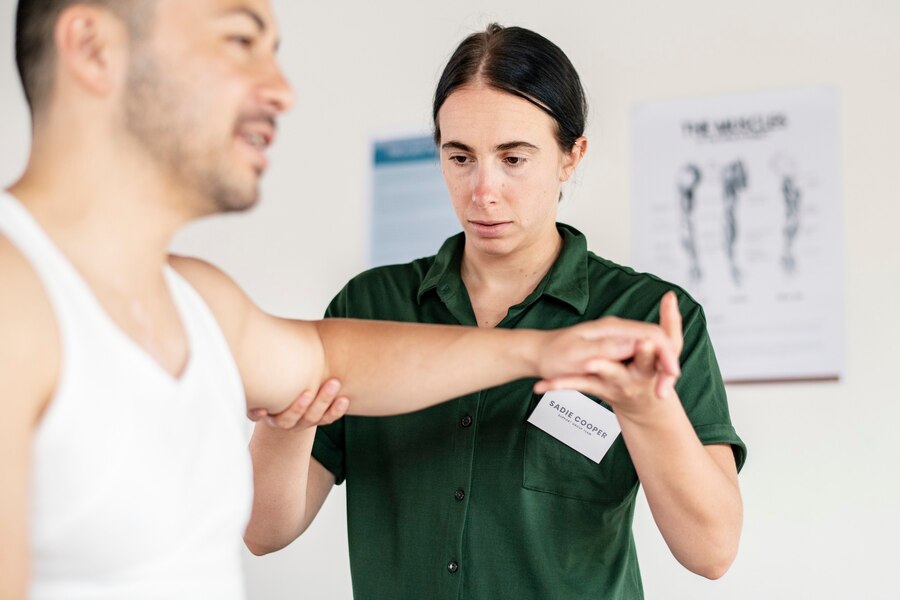You know, when it comes to recovering from an injury or managing a chronic condition, physical therapy can be a game-changer. However, unlocking the full benefits of this transformative treatment requires expert guidance and best practices. Let’s explore the world of physical therapy and delve into the strategies that drive optimal healing and recovery.
Benefits Of Physical Therapy
- Physical therapy offers a multitude of benefits for individuals seeking to regain mobility, manage pain, and improve overall quality of life. One of the primary advantages is the personalized approach it provides. Unlike generic exercise routines, physical therapy is tailored to each individual’s specific needs and goals. Whether it’s a sprained ankle or a chronic back condition, a skilled physical therapist can develop a treatment plan that addresses the root cause of the problem and helps restore function.
- Another key benefit of physical therapy is pain management. Through a combination of manual therapy, therapeutic exercises, and modalities such as heat or ice, physical therapists can effectively reduce pain and inflammation. By improving strength, flexibility, and range of motion, physical therapy helps individuals regain control over their bodies and minimize reliance on pain medications.
- Furthermore, physical therapy plays a crucial role in preventing future injuries and complications. By identifying and addressing imbalances, weaknesses, and faulty movement patterns, physical therapists help patients build a solid foundation of strength and stability. This proactive approach not only reduces the risk of re-injury but also enhances performance in sports and daily activities.
Understanding The Process Of Physical Therapy

Physical therapy is a comprehensive process that involves several stages, each crucial for optimal healing and recovery. The first step is an initial assessment, where the physical therapist evaluates the patient’s condition, medical history, and functional limitations. This assessment helps establish baseline measurements and set realistic goals for the treatment.
Based on the evaluation, the physical therapist then designs a personalized treatment plan tailored to the patient’s specific needs.
This plan may include a combination of manual therapy techniques, therapeutic exercises, and modalities. The therapist will also guide proper body mechanics and lifestyle modifications to support the healing process.
During the treatment sessions, the physical therapist closely monitors the patient’s progress and adjusts the plan as needed. This ongoing assessment ensures that the therapy is effective and that the patient is moving toward their goals while they reap the benefits of physical therapy.
Additionally, the therapist educates the patient on self-management techniques, empowering them to take an active role in their recovery.
Expert Tips For Optimal Healing And Recovery
To unlock the full benefits of physical therapy, it’s essential to follow expert best practices. Here are some tips from industry professionals that can help enhance your healing and recovery journey:
Patient Compliance Is Critical In Physical Therapy

While physical therapists play a crucial role in guiding and facilitating the healing process, patient compliance is equally significant. Adhering to the treatment plan and actively participating in the therapy sessions are essential for optimal healing and recovery.
Compliance Begins With Attending All Scheduled Appointments And Arriving On Time
Physical therapy requires consistency and regularity, and missing sessions can significantly hinder progress. Additionally, following the therapist’s instructions for home exercises and self-care routines is crucial for maintaining the gains made during the therapy sessions.
It’s Also Essential To Communicate Openly And Honestly With Your Physical Therapist
If you experience any discomfort or have concerns about your treatment plan, discuss them openly. Your therapist can modify the plan or provide additional guidance to ensure your comfort and progress.
The Miracle Rehab Clinic offers tailored plans for each individual. You can learn more about their physical therapy programs and duration through the following link: https://www.miraclerehabclinic.com/blog/how-long-is-physical-therapy
Finally, a positive mindset and proactive approach can make a significant difference in your physical therapy journey. Embrace the challenges, stay motivated, and celebrate even the small victories along the way.
Remember, physical therapy is a partnership between you and your therapist, and your active involvement and commitment are key to achieving optimal healing and recovery.
The Different Types Of Physical Therapies

The benefits of physical therapy are immense, and this is why millions of people are using the help of therapies to search for comprehensive wellness. However, here we mention the variations of physical treatments.
Physical Excercise
Exercise has a great role in regulating the physical stress that is applied to the body. Flexibility and range of motion help fight physical stress. You all know that stress is one of the major problems that people are facing in their daily lives. There are many benefits of physical therapy, and they are all related to comprehensive wellness.
Ultrasound
Ultrasound is another type of physical therapy option. The treatment benefits of physical therapy are quite high—the care users, mainly those aged, like to reap the benefits. There is a want called the sound head. It is pressed gently against your skin. It moves in circular sweeps close to the area of injury. Before, the practitioners used a gel on that affected area.
Electronic Simulation
The electric stimulation is a physical therapy. It aids in offering relief to the injured tissue. The transcutaneous electrical neuromuscular simulation is one of the major forms of this therapy.
Traction
When discussing the benefits of physical therapy, you can not do it without tractions. It is applied to the care users who complain about low back and neck pain. The treatment methodology helps decrease the pain and improve the spine’s mobility.
There are some other methodologies apart from the one we mentioned, like joining mobilization, massage, heat, and ice. They all have their benefits.
Final Thoughts…
Physical therapy offers a multitude of benefits for individuals seeking to recover from injuries, manage chronic conditions, and improve overall well-being. By understanding the process of physical therapy and following expert best practices, you can unlock the full potential of this transformative treatment.
Set realistic goals, be consistent and committed, communicate openly, and prioritize self-care to enhance your healing and recovery journey. Remember, physical therapy is a collaborative effort between you and your physical therapist, and together, you can achieve optimal results and regain control over your health and mobility.
Read Also:

















